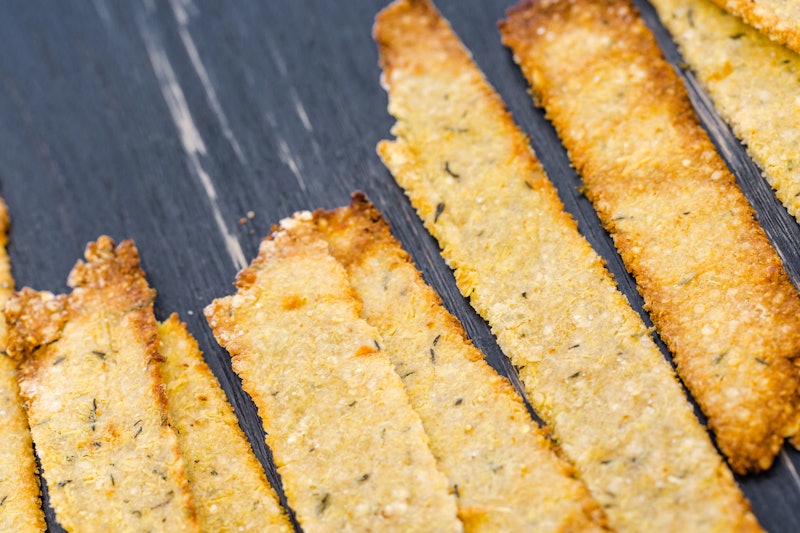Life
The 7 Healthiest Gluten Substitutes

To put it simply, having celiac disease, gluten intolerance, or a wheat allergy is no fun. Not only must you deal with naysayers who think gluten intolerance is a low-carb diet in disguise, but to cut out gluten — cake, pizza, pasta — can be an extremely daunting task for the carb-inclined. Even if you don’t suffer from celiac disease, but just intolerance, anticipating the consequences after a “gluten-ous” indulgence can turn into a guilt fest.
So, for those of us gluten sensitive people who still worship at the altar of carbohydrates, only to endure painful stomach aches — there is hope. There are substitutes, and living a gluten-free lifestyle is far from a death by (lack of) chocolate cake situation. In fact, you can have your cake and eat it too.
I turned to Jennifer Mielke, a holistic health coach at the highly revered Eleven Eleven Wellness Center in New York City for tips on how to make smart substitutions for the gluten-filled products you can’t bear to give up.
BREADS
When shopping for gluten-free breads (or any G-F product really) the ingredient list is key. You want it to be pretty short, and you want it to be front-loaded with ingredients that are nourishing — almonds, lentils, quinoa, chia, or chickpea flours are delivering much more nutrition per serving than brown rice flour, tapioca starch, and potato starch. Mielke is far from the only nutrition expert to suggest caution around gluten-free food products. “I'm not a fan of most gluten-free products, as they are still basically processed foods and often loaded with sugar (just as big a problem as gluten),” she says. Jennifer’s top picks for healthy G-F bread can be found at Jennifer's Way Bakery. Another highly recommended option is the Life Changing Loaf of Bread (yes, it's really called that) which she notes is “nothing short of delectable with avocado, olive oil, and salt and pepper.”
PASTAS
There are a few types of gluten-free pasta. One of the healthiest, however, is quinoa pasta. Note that the ingredient list will probably include corn, which is very high in carbohydrates but often a primary ingredient even in quinoa pasta. Another great alternative can be found in Black Bean pasta. Rice pasta is good for stir fry. In fact, Asian cuisines offer a multitude of G-F options (just watch out for the hidden gluten sometimes found in soy sauce).
CAKE
Carly Shapiro, 23, had had enough of office cupcakes she couldn’t eat when she left her job and dedicated herself to making gluten-free cake bites, which she ships nationally. Lucky for us that she did, since now we can get our hands on these adorable (and customizable) bites, which come in flavors like red velvet and funfetti, to name a few. Gluten-free bakeries have also popped up across the country — see Tu-lu's in New York and Dallas, Coco Bakes and Whisk in Los Angeles, Cookie Bar in Chicago (which does more than cookies), and Sally's in Atlanta — and many, like Califiornia-based Sensitive Sweets, will ship nationwide.
COOKIES
The best news of my own gluten-free tenure has been the existence of Tate's sans gluten. There is absolutely no sacrifice on taste in the gluten-free version of the famed crispy cookies. Just don’t mistake gluten-free for dietetic.
CRACKERS
Japanese rice crackers are an equally satisfying alternative to regular crackers. They’re super crunchy and low in fat, and while they are not rich in fiber or other nutrients, they’re an even better snack when topped with lox, hummus, or cheese to add protein.
QUINOA
Lucky for celiacs and the gluten-intolerant everywhere, this G-F grain is gaining in popularity and is now easier to find on menus — atop salads, on its own, or as a side. Like tofu, it takes on whatever flavor is added to it. A great quinoa bowl can include anything from walnuts and dried cranberries to avocado, black beans, corn, and tomato.
OATMEAL
Gluten-free oatmeal is a fabulous option for a healthy breakfast. Oatmeal, a low-calorie food, is one of the most protein-rich grains around and full of fiber. With some almond milk, berries, and chia/flax seeds you’ve got a filling and nutritious breakfast. While some gluten-intolerant people can eat regular oatmeal, if you find you are extra sensitive, there are very good gluten-free options as well. I recommend Glutenfreeda, which makes original and flavored options.
As you shop for gluten-free products, keep in mind that you should consume them in roughly the same amounts as you would wheat-based products. Going gluten-free is not a weight-loss plan, nor should it be. It's simply a way to reduce the inflammation gluten can cause. So make the healthiest substitutions you can, and enjoy the fact that gluten issues don't mean you have to give up the foods you love eating.
Image: arinahabich/Fotolia